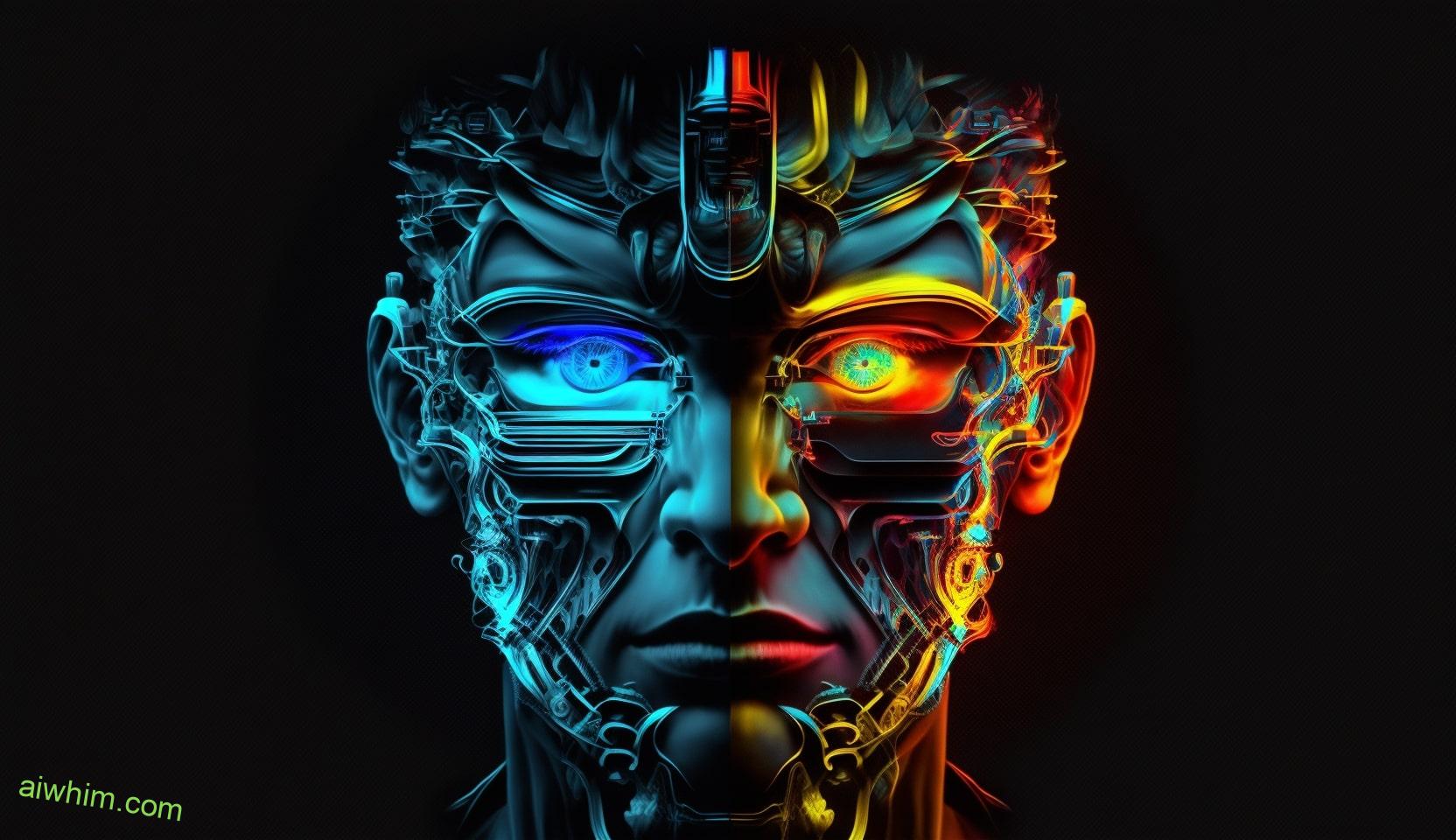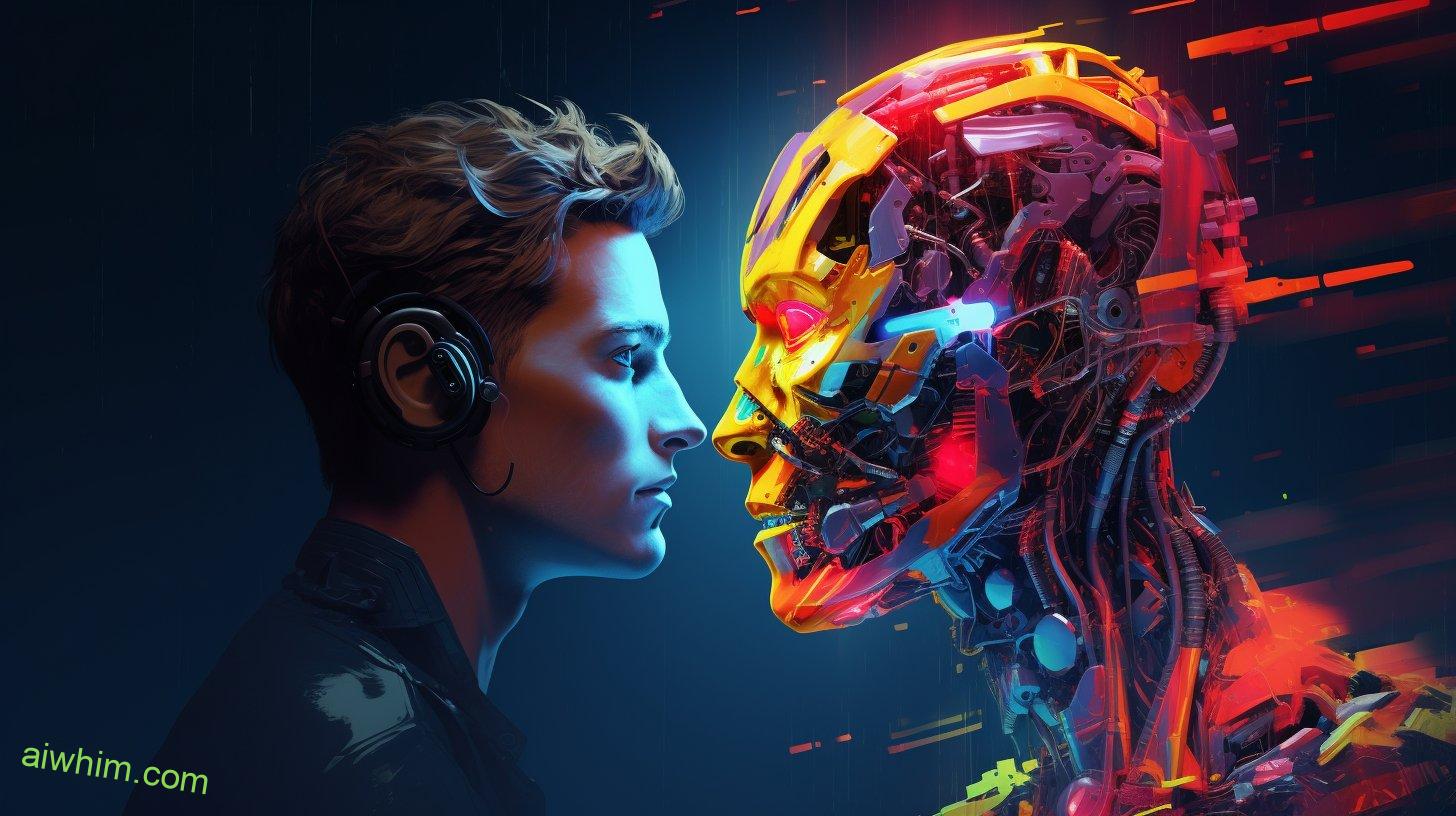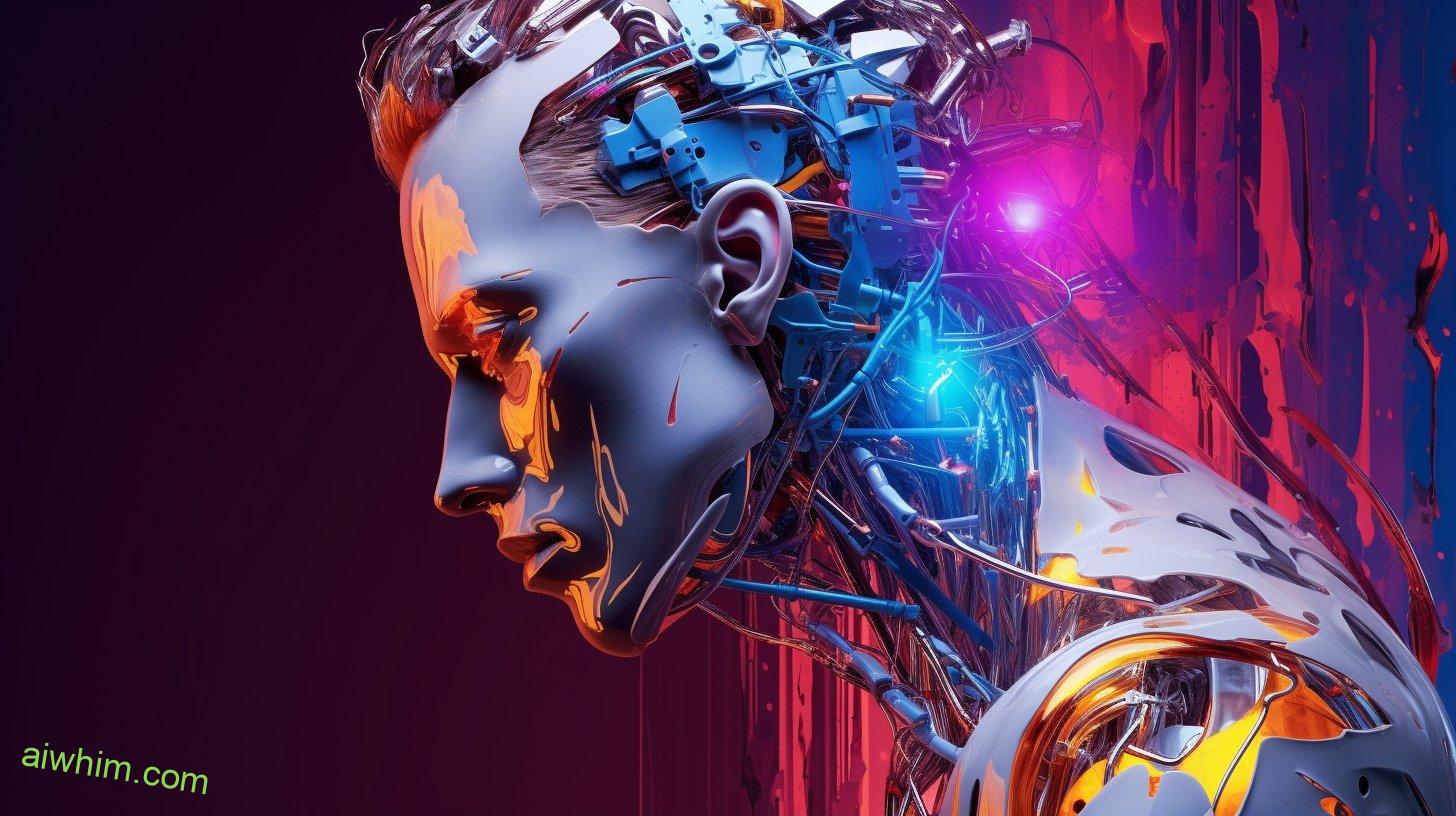Are you ready to explore the future of speech-language therapy? Get ready for a revolution as AI takes center stage in the field.
In this article, we will delve into the rise of AI and its impact on language rehabilitation. Discover how AI-assisted assessment can benefit therapists and patients alike.
We’ll also discuss the limitations of AI and provide an overview of cutting-edge tools in speech therapy.
Brace yourself for a journey into the exciting world where AI supports communication disorders treatment.
Key Takeaways
- AI is revolutionizing the field of speech-language therapy, enhancing accessibility, efficiency, and effectiveness in therapy.
- AI applications in language rehabilitation provide personalized learning, real-time feedback, and unparalleled accessibility and convenience.
- AI technology is making assessment in speech-language therapy more efficient and accurate, with AI-assisted diagnosis and personalized treatment plans.
- While AI has many benefits in speech therapy, it also has limitations such as struggling with certain accents or dialects accurately and the inability to replicate the human connection and empathy provided by trained therapists.

The Rise of AI in Speech-Language Therapy
AI is poised to revolutionize the field of speech-language therapy. With advancements in technology, AI-powered tools and applications are becoming more prevalent, offering new possibilities for understanding and treating communication disorders. The impact of AI on speech-language therapy is immense, as it has the potential to enhance accessibility, efficiency, and effectiveness in delivering therapeutic interventions.
One key aspect of AI’s impact on speech-language therapy lies in its ability to provide personalized interventions. By analyzing vast amounts of data and utilizing machine learning algorithms, AI can tailor treatment plans to meet individual needs. This level of customization ensures that therapy sessions are targeted towards specific goals and challenges faced by each patient.
Furthermore, AI technology enables real-time feedback during therapy sessions. Through voice recognition software and natural language processing capabilities, AI systems can assess a patient’s articulation, fluency, and language skills instantly. This immediate feedback allows individuals to track their progress more effectively and make necessary adjustments during their sessions.
Looking towards the future advancements in this field, researchers are exploring the potential use of virtual reality (VR) combined with AI algorithms for speech-language therapy. VR can create immersive environments that simulate real-life situations where individuals may struggle with communication skills. By incorporating AI into VR applications, therapists can have access to even more accurate assessments and develop targeted interventions based on individual needs.

Understanding the Role of AI in Language Rehabilitation
Understanding how technology can assist you in rehabilitating your language skills is crucial. AI applications have the potential to revolutionize language recovery and provide individuals with newfound freedom and independence.
Here are three ways AI can empower you on your journey towards regaining your language abilities:
- Personalized Learning: With AI, language rehabilitation programs can be tailored specifically to your needs and progress. Through advanced algorithms, AI systems can analyze your strengths and weaknesses, adapting the exercises and activities accordingly. This personalized approach ensures that you receive targeted practice in areas where you require more assistance, maximizing the effectiveness of your therapy sessions.
- Real-time Feedback: AI allows for instant feedback during language rehabilitation exercises. As you engage with speech recognition software or virtual reality simulations, AI algorithms can detect errors in pronunciation or grammar instantly, providing immediate corrective feedback. This real-time guidance helps accelerate your learning process by enabling you to make corrections immediately rather than waiting for a therapist’s input.
- Accessibility and Convenience: Language recovery programs powered by AI offer unparalleled accessibility and convenience. You can access these tools from the comfort of your own home using a smartphone or computer, eliminating the need for frequent visits to a therapist’s office. This flexibility allows you to fit therapy sessions into your schedule at any time, giving you the freedom to take control of your own language rehabilitation journey.
With advancements in AI applications for language recovery, technology is becoming an invaluable resource in assisting individuals like yourself in regaining their language skills independently and efficiently. Embrace this liberating opportunity as it opens doors to new possibilities on your path towards fluent communication once again.

AI-Assisted Assessment in Speech-Language Therapy
Assessing your progress in speech-language therapy can be made more efficient and accurate with the assistance of AI technology. With AI-assisted diagnosis, you can receive a detailed analysis of your language abilities, helping you understand where you stand in your therapy journey.
AI technology has revolutionized the field of speech-language therapy by providing objective assessments that go beyond human observations. Through advanced algorithms and machine learning, AI systems can analyze your speech patterns, language comprehension, and articulation skills with precision. This enables therapists to identify specific areas of improvement and tailor interventions accordingly.
Using AI-enabled intervention methods, therapists can create personalized treatment plans that address your unique needs. These interventions may include interactive software programs or mobile applications that provide real-time feedback on pronunciation or grammar usage. With these tools at your disposal, you have the freedom to practice anytime and anywhere, empowering you to take control of your own progress.
Furthermore, AI technology allows for remote monitoring and teletherapy sessions. This means that even if you cannot physically attend therapy sessions due to distance or other constraints, you can still receive high-quality care through virtual platforms. The convenience of teletherapy ensures that geographical limitations do not hinder your access to effective treatment.

Benefits and Limitations of AI in Speech Therapy
When it comes to speech therapy, you can benefit from AI technology by receiving personalized treatment plans and real-time feedback on your progress. AI in speech therapy has its limitations and challenges, but it also offers unique advantages that can empower you on your journey towards better communication.
Here are three ways AI can enhance your speech therapy experience:
- Personalized Treatment: With the help of AI, you can receive customized treatment plans tailored to your specific needs. The technology analyzes your speech patterns and identifies areas that require improvement. This individualized approach allows for targeted interventions, maximizing the efficiency of your therapy sessions.
- Real-Time Feedback: AI provides instant feedback on your progress during therapy sessions. It recognizes errors in pronunciation or articulation and offers suggestions for improvement in real-time. This immediate feedback helps you make corrections promptly, accelerating your learning process.
- Accessibility: AI-based speech therapy tools offer greater accessibility for individuals who may face limitations or challenges in accessing traditional therapy services due to factors such as location or cost. These technologies enable you to practice at any time from the comfort of your own home, ensuring flexibility and convenience.
While AI brings significant benefits to speech therapy, it’s important to acknowledge its limitations and challenges. The technology may struggle with understanding certain accents or dialects accurately, leading to potential misinterpretations or incorrect suggestions for improvement. Additionally, human connection and empathy provided by a trained therapist cannot be replicated by AI alone.
Remember that freedom lies in making informed choices about how you want to incorporate AI into your speech therapy journey while acknowledging both its advantages and limitations.

AI Tools for Speech-Language Therapy: An Overview
To get started with AI tools for speech-language therapy, you can explore a variety of resources and platforms that offer personalized treatment plans and real-time feedback on your progress. These AI tools are revolutionizing the field by providing accessible and convenient options for individuals seeking accent modification or stuttering therapy.
For those looking to improve their accents, AI in accent modification offers tailored programs that help you refine your pronunciation, intonation, and rhythm. With the help of advanced algorithms, these tools analyze your speech patterns and provide targeted exercises to enhance your pronunciation skills. You can practice at your own pace, receiving immediate feedback on areas where improvement is needed. This allows you the freedom to work on your accent from anywhere at any time.
Similarly, AI in stuttering therapy provides innovative solutions for individuals struggling with fluency disorders. Through intelligent algorithms, these tools analyze your speech patterns and identify moments of disfluency. They then offer techniques such as slow speech or breathing exercises to help manage stuttering episodes. The real-time feedback provided by these AI tools allows you to track progress over time and make adjustments accordingly.
These AI tools not only provide accessibility but also promote independence in the journey towards better communication skills. With customizable treatment plans and constant support available through various platforms, individuals have the freedom to take charge of their own learning process.

Enhancing Speech Therapy With AI Technology
If you’re looking to improve your speech therapy sessions, AI technology can provide valuable tools and resources to enhance your progress. With the advancements in AI technology, speech therapy has become more accessible and effective than ever before.
Here are three ways that AI technology can revolutionize your speech therapy experience:
- Personalized Practice: AI-powered speech therapy platforms can create personalized practice exercises tailored specifically to your needs. These platforms use sophisticated algorithms to analyze your speech patterns and identify areas that require improvement. By providing targeted exercises and real-time feedback, AI technology allows you to practice at your own pace and focus on the areas that need the most attention.
- Virtual Speech Therapy Assistants: Imagine having a virtual assistant by your side during every session. AI-powered virtual assistants can mimic the role of a speech-language therapist, guiding you through each exercise, providing cues and prompts, and offering instant feedback on pronunciation and articulation. These assistants are available 24/7, allowing you to practice whenever it’s convenient for you.
- Gamified Learning: Traditional speech therapy exercises can be repetitive and mundane, making it difficult to stay motivated. However, with AI-powered gamification techniques, learning becomes engaging and fun! Speech therapy apps incorporate game-like elements such as challenges, rewards, levels, and leaderboards to make practicing enjoyable while still focusing on specific language goals.
By incorporating AI technology into your speech therapy sessions, you gain access to personalized practice exercises, virtual assistants for guidance and feedback, as well as gamified learning experiences that keep you motivated throughout the process.
Embrace this technological revolution in speech therapy today and experience newfound freedom in improving your communication skills!

Addressing Ethical Concerns in AI-Powered Language Rehabilitation
Addressing ethical concerns in AI-powered language rehabilitation requires careful consideration of the potential biases and limitations that may arise from relying solely on technology for therapy. As an individual who values freedom, it is important to recognize the ethical implications and privacy concerns associated with using AI in this field.
When it comes to language rehabilitation, trust is paramount. While AI technology can provide valuable assistance in speech therapy, it is crucial to remember that it lacks the human element that therapists bring to the table. The personalized connection between a therapist and their patient cannot be replicated by a machine. Therefore, it is essential to question how much reliance on AI could compromise the quality of care provided.
Furthermore, privacy concerns are also raised when implementing AI in language rehabilitation. As an advocate for freedom, you value your personal information and want assurance that it will remain secure. Sharing sensitive data with AI systems raises questions about who has access to this information and how it will be used. It becomes imperative to ensure transparency and establish strict protocols regarding data handling and storage.
While AI can undoubtedly enhance language rehabilitation efforts, maintaining a balance between technological advancements and human involvement is vital. By incorporating both elements into therapy sessions, you can benefit from cutting-edge technology while still receiving personalized care tailored specifically to your needs.

AI Vs Human Therapists: Examining the Pros and Cons
When comparing AI to human therapists, you may wonder about the advantages and disadvantages of each approach. Here are three key considerations to keep in mind:
- Efficiency: AI therapy offers a level of efficiency that is hard to match. With AI, you have access to therapy whenever and wherever you need it. No more waiting weeks for an appointment or traveling long distances to see a therapist. The convenience and accessibility of AI can greatly benefit those who desire freedom in managing their own time and schedule.
- Personalization: Human therapists bring a unique element of personalization to the therapeutic process. They can tailor their approach based on individual needs, emotions, and progress. The human touch allows for empathy, understanding, and genuine connection that can be difficult for AI to replicate fully.
- Effectiveness: While AI therapy has made significant advancements, there is still ongoing debate about its effectiveness compared to traditional therapy methods provided by human therapists. While AI can provide valuable tools and resources for self-guided learning and practice, some individuals may find greater benefit from the guidance and expertise offered by human therapists.

AI Innovations in Articulation Therapy
AI therapy has made significant advancements in the field of articulation therapy, offering innovative approaches to help you improve your speech clarity and pronunciation. With recent AI advancements, speech therapy techniques have become more accessible and tailored to individual needs.
One exciting development in AI therapy is the use of virtual reality (VR) technology. By creating immersive environments, AI can simulate real-life scenarios that challenge your articulation skills. This allows you to practice speaking in a variety of situations, from casual conversations to public speaking engagements. The feedback provided by the AI system helps you identify areas for improvement and guides you towards clearer speech.
Another area where AI has shown promise is in personalized treatment plans. Through machine learning algorithms, AI systems analyze your specific speech patterns and develop targeted exercises to address your unique challenges. These exercises can be delivered through interactive apps or online platforms, giving you the freedom to work on your articulation at your own pace and convenience.
Furthermore, AI-powered voice recognition software has revolutionized the way speech therapists assess progress. Instead of relying solely on subjective evaluations, therapists can now use advanced algorithms to objectively measure improvements in speech clarity and pronunciation over time. This not only provides a more accurate assessment but also allows for data-driven adjustments in treatment plans.
While it’s important to remember that AI therapy cannot replace human interaction entirely, these advancements offer valuable tools for individuals seeking greater independence and flexibility in their journey towards improved articulation skills. Embracing these technological innovations alongside traditional therapy can lead to enhanced outcomes and empower you with newfound confidence in expressing yourself clearly and effectively.

The Future of AI in Language Intervention
As you look towards the future of language intervention, it’s exciting to consider how AI will continue to evolve and enhance the effectiveness of therapy techniques. The integration of AI in speech recognition and language learning has already shown great potential in revolutionizing the field.
Here are three reasons why this development is truly liberating:
- Personalized Learning: With AI-powered speech recognition, individuals can receive personalized feedback on their pronunciation and fluency in real-time. This allows for tailored interventions that address specific needs and challenges. Gone are the days of rigid lesson plans; now, you have the freedom to learn at your own pace and focus on areas that require improvement.
- Accessible Resources: AI technology enables language intervention to be accessible anywhere, anytime. Online platforms equipped with AI-based tools provide a wealth of resources for self-study or remote therapy sessions. Now, you don’t have to rely solely on scheduled appointments or limited resources – freedom is at your fingertips.
- Natural Language Processing: Thanks to advancements in AI, language learning programs can now understand context, nuances, and even cultural references better than ever before. This means that as you engage with these programs, they can offer more authentic conversations and immersive experiences that mimic real-life interactions.

Exploring Virtual Reality and AI in Speech-Language Therapy
Imagine stepping into a virtual reality world where you can engage in immersive language therapy experiences. Virtual reality applications and AI-powered interventions are revolutionizing speech-language therapy, giving you the freedom to learn and improve your communication skills in an interactive and dynamic environment.
With virtual reality applications, you have the opportunity to enter simulated scenarios that replicate real-life situations. Whether it’s ordering food at a restaurant or participating in a job interview, these experiences allow you to practice your language skills in a safe and controlled setting. The virtual environment provides feedback, guiding you through the correct pronunciation, intonation, and grammar usage.
AI-powered interventions further enhance your learning experience by personalizing the therapy program to meet your specific needs. Through advanced algorithms, artificial intelligence analyzes your speech patterns, identifies areas for improvement, and tailors exercises accordingly. This individualized approach ensures that you receive targeted support and progress at your own pace.
The combination of virtual reality and AI creates an engaging and motivating learning environment. You have the freedom to explore different scenarios, make mistakes without judgment, and receive immediate feedback on your performance. The interactive nature of these technologies fosters active participation and promotes confidence in using language skills.
Virtual reality applications and AI-powered interventions are transforming speech-language therapy by providing accessible, effective, and enjoyable methods for improving communication abilities. By immersing yourself in these innovative tools, you can break free from traditional constraints of therapy sessions while gaining valuable skills that will empower you in various aspects of life.

How AI Can Support Communication Disorders Treatment
Using advanced algorithms, artificial intelligence can analyze speech patterns and tailor therapy exercises to address specific needs in communication disorders treatment. This technology has revolutionized the field of speech-language therapy, providing individuals with personalized and efficient support.
Here are three ways AI applications are transforming communication disorders treatment:
- Improved accessibility: AI enables remote therapy sessions, breaking down geographical barriers and allowing people to receive treatment from the comfort of their own homes. No longer constrained by travel or limited availability of therapists, individuals have the freedom to access therapy whenever they need it.
- Enhanced individualization: By analyzing speech patterns and tracking progress over time, AI can create personalized therapy programs that adapt to each individual’s unique needs. This level of customization ensures that therapy exercises target specific areas requiring improvement, resulting in more effective outcomes.
- Real-time feedback: Through voice recognition technology, AI can provide immediate feedback during therapy exercises. This instant feedback allows individuals to make adjustments in real-time, reinforcing correct behaviors and facilitating faster progress in their communication skills.
These technological advancements not only enhance the effectiveness of communication disorders treatment but also empower individuals with newfound freedom and independence on their journey towards improved communication abilities. With AI as a supportive tool, therapists will be able to focus more on building meaningful connections with their clients while leveraging the power of technology for optimized outcomes.

AI-Powered Tools for Speech Assessment and Monitoring
You can utilize AI-powered tools to assess and monitor your speech progress in real-time. With the advancements in artificial intelligence, it is now possible to have access to cutting-edge technology that can support you on your journey towards fluent and confident communication. These AI-driven language assessment tools provide an efficient and convenient way to track your speech development.
Through AI-based speech monitoring, you can receive instant feedback on various aspects of your spoken language. The algorithms analyze factors such as pronunciation, intonation, fluency, and grammar accuracy. This real-time evaluation allows you to identify areas for improvement and make adjustments as needed. With constant practice using these tools, you can witness significant progress in your speaking abilities.
The beauty of these AI-powered tools lies in their accessibility. You no longer need to rely solely on face-to-face sessions with a speech-language therapist or attend physical therapy clinics regularly. Instead, you have the freedom to practice at your own pace and convenience from anywhere with an internet connection.
Not only do these tools enable independent learning but they also offer personalized guidance tailored specifically to your needs. By collecting data from each session, the AI algorithms adapt and customize the exercises according to your strengths and weaknesses. This individualized approach ensures that you are receiving targeted practice that maximizes your potential for improvement.

Integrating AI Into Telepractice for Language Rehabilitation
By integrating AI into telepractice, you can benefit from advanced technology that supports your progress and enhances the effectiveness of remote therapy sessions. Here are three ways in which this integration can bring freedom and empowerment to your language rehabilitation journey:
- Personalized Learning Experience: With AI-powered tools, telepractice can provide tailored exercises and activities based on your specific needs and goals. By analyzing your speech patterns and language abilities, the AI algorithms can create personalized lesson plans that target areas for improvement. This individualized approach allows you to work at your own pace, focusing on the areas that require attention, ultimately enhancing your rehabilitation experience.
- Real-Time Feedback: During telepractice sessions with AI integration, you can receive immediate feedback on your pronunciation, grammar, and overall language skills. The AI algorithms can analyze your speech in real-time, providing instant corrections or suggestions for improvement. This real-time feedback not only saves time but also helps you identify areas where additional practice is needed, allowing for quicker progress in your language rehabilitation journey.
- Accessible Support Anytime: Integrating AI into telepractice means having access to support anytime and anywhere. Whether it’s through virtual therapy sessions or using mobile applications powered by AI technology, individuals seeking language rehabilitation have the freedom to engage in therapy at their convenience. This flexibility eliminates geographical barriers and time constraints while ensuring consistent support throughout the process.
While there are undeniable benefits to integrating AI into telepractice for language rehabilitation, it’s important to acknowledge its limitations as well. While AI algorithms continue to improve in accuracy and effectiveness, they still lack the human touch that a speech-language therapist provides – empathy, personal connection, and adaptability to unique situations.
Therefore, while AI technology enhances remote therapy sessions by offering personalized learning experiences, real-time feedback, and accessible support anytime, it cannot fully replace the expertise of a skilled therapist who understands nuances of communication disorders and tailors treatment accordingly.

You’ve learned about integrating AI into telepractice for language rehabilitation, and now it’s time to explore the transition to AI-assisted speech therapy. Imagine a world where AI-powered virtual reality therapy could revolutionize the way we approach speech therapy. It sounds like something out of a science fiction novel, but this technology is becoming increasingly prevalent in the field.
AI-powered virtual reality therapy combines the benefits of artificial intelligence and immersive virtual reality to create a personalized and engaging experience for individuals with communication disorders. This innovative approach allows users to practice their speaking skills in realistic scenarios, receiving real-time feedback from AI algorithms that analyze their speech patterns.
While this advancement holds immense potential for improving therapy outcomes, there are also ethical implications to consider. As AI takes on a more prominent role in speech therapy, questions arise regarding patient privacy and data security. It’s essential for therapists and developers to ensure that sensitive information is protected and only used for therapeutic purposes.
Additionally, there is concern about the human touch being replaced by machines. Speech-language therapists provide not only treatment but also emotional support and motivation during sessions. As we integrate AI into speech therapy, it’s crucial to strike a balance between technological advancements and maintaining the human connection that patients desire.

Frequently Asked Questions
How Can AI Be Integrated Into Telepractice for Language Rehabilitation?
You can integrate AI into telepractice for language rehabilitation by utilizing AI in telepractice and taking advantage of its capabilities for language rehab. It can enhance therapy and provide personalized support.
What Are the Benefits and Limitations of Using AI in Speech Therapy?
Using AI in speech therapy can have benefits such as increased accessibility and personalized learning. However, it is important to acknowledge the limitations of AI in therapy, including the lack of human connection and individualized treatment plans.
How Can AI Tools Be Used for Speech Assessment and Monitoring?
AI can revolutionize speech assessment and monitoring. With AI-based tools, your progress can be tracked in real-time, providing personalized feedback and language rehabilitation. Embrace the freedom of technology to enhance your communication skills.
What Are the Ethical Concerns Surrounding AI-Powered Language Rehabilitation?
Ethical concerns arise with AI-powered language rehabilitation, particularly in patient privacy. As an audience seeking freedom, you should consider the implications of using technology that could potentially replace human speech-language therapists.
What Are the Pros and Cons of Using AI in Speech Therapy Compared to Human Therapists?
Using AI in speech therapy offers benefits like increased accessibility and personalized learning. However, it lacks the human touch and empathy that therapists provide. It complements rather than replaces human therapists in telepractice for language rehabilitation.

Conclusion
In conclusion, AI is poised to revolutionize the field of speech-language therapy. With its ability to assess, monitor, and support communication disorders treatment, AI tools offer a new level of efficiency and effectiveness.
However, it is important for speech-language therapists to navigate this transition carefully, ensuring that human touch and expertise are not lost in the process.
Like a guiding light through a foggy path, AI has the potential to enhance therapy outcomes and improve the lives of those with communication challenges.







